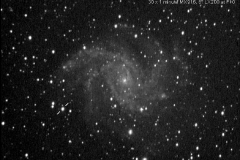[et_pb_section fb_built="1" _builder_version="3.22"][et_pb_row _builder_version="3.25" background_size="initial" background_position="top_left" background_repeat="repeat"][et_pb_column type="4_4" _builder_version="3.25" custom_padding="|||" custom_padding__hover="|||"][et_pb_text admin_label="Intro" _builder_version="3.27.4"]
NGC 7635, also called the Bubble Nebula, is a H II region emission nebula in the constellation Cassiopeia . It lies close to the direction of the open cluster Messier 52. The "bubble" is created by the stellar wind from a massive hot, magnitude 8.7 young central star. The nebula is near a giant molecular cloud which contains the expansion of the bubble nebula while itself being excited by the hot central star, causing it to glow. It was discovered in 1787 by Friedrich Wilhelm Herschel. The star SAO 20575 or BD+602522 is thought to have a mass of 10-40 Solar masses.
Members have successfully imaged Caldwell 11 through severe light pollution (Greater London) using 8" telescopes.
[/et_pb_text][/et_pb_column][/et_pb_row][et_pb_row column_structure="1_4,3_4" _builder_version="3.25" background_size="initial" background_position="top_left" background_repeat="repeat"][et_pb_column type="1_4" _builder_version="3.25" custom_padding="|||" custom_padding__hover="|||"][et_pb_text admin_label="SD Image" _builder_version="3.27.4"]
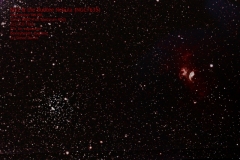
[/et_pb_text][/et_pb_column][et_pb_column type="3_4" _builder_version="3.25" custom_padding="|||" custom_padding__hover="|||"][et_pb_text admin_label="Simon Dawes Text" _builder_version="3.27.4"]
Imaged by Simon Dawes
Skywatcher MN190
Canon 600D (Full Spectrum Mod) + CLSCCD Filter
27m Exposure from Bexleyheath, England.
[/et_pb_text][/et_pb_column][/et_pb_row][et_pb_row column_structure="1_4,3_4" _builder_version="3.25" background_size="initial" background_position="top_left" background_repeat="repeat"][et_pb_column type="1_4" _builder_version="3.25" custom_padding="|||" custom_padding__hover="|||"][et_pb_text admin_label="KR Image" _builder_version="3.27.4"]
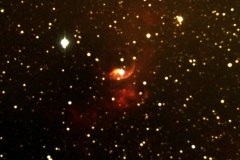
[/et_pb_text][/et_pb_column][et_pb_column type="3_4" _builder_version="3.25" custom_padding="|||" custom_padding__hover="|||"][et_pb_text admin_label="Keith Rickard Text" _builder_version="3.27.4"]
Imaged by Keith Rickard
SBIG ST7-XME CCD camera, 8" Meade LX200 Schmidt Cassegrain Classic at F6.3
30 x 30sec images in red, green, blue and luminance
[/et_pb_text][/et_pb_column][/et_pb_row][et_pb_row column_structure="1_4,3_4" _builder_version="3.25" background_size="initial" background_position="top_left" background_repeat="repeat"][et_pb_column type="1_4" _builder_version="3.25" custom_padding="|||" custom_padding__hover="|||"][et_pb_text admin_label="JT Image" _builder_version="3.27.4"]
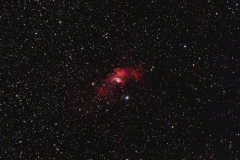
[/et_pb_text][/et_pb_column][et_pb_column type="3_4" _builder_version="3.25" custom_padding="|||" custom_padding__hover="|||"][et_pb_text admin_label="Julian Tworek" _builder_version="3.27.4"]
Sky Watcher Mak-Newt 190mm, Canon modified 40D, ISO 800, 73 X 3min subs total 3hrs 39min
PHD guiding with QHY5 15\11\2010, EQ6 Imaged by Julian Tworek
[/et_pb_text][/et_pb_column][/et_pb_row][et_pb_row column_structure="1_4,3_4" _builder_version="3.25" background_size="initial" background_position="top_left" background_repeat="repeat"][et_pb_column type="1_4" _builder_version="3.25" custom_padding="|||" custom_padding__hover="|||"][et_pb_text admin_label="AW Image" _builder_version="3.27.4"]
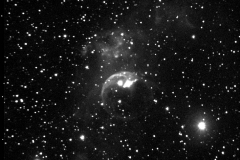
[/et_pb_text][/et_pb_column][et_pb_column type="3_4" _builder_version="3.25" custom_padding="|||" custom_padding__hover="|||"][et_pb_text admin_label="Andy Wilson Text" _builder_version="3.27.4"]
Imaged by Andrew Wilson
8" LX200 and MX916 CCD
[/et_pb_text][/et_pb_column][/et_pb_row][et_pb_row _builder_version="4.3.2"][et_pb_column type="4_4" _builder_version="4.3.2"][et_pb_text admin_label="Images by Kevin Langford" _builder_version="3.18.7" global_module="3167" saved_tabs="all"]
Images by Kevin Langford
[/et_pb_text][/et_pb_column][/et_pb_row][et_pb_row column_structure="1_4,1_4,1_4,1_4" _builder_version="4.3.2"][et_pb_column type="1_4" _builder_version="4.3.2"][et_pb_text _builder_version="4.3.2"]
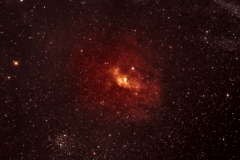
[/et_pb_text][/et_pb_column][et_pb_column type="1_4" _builder_version="4.3.2"][/et_pb_column][et_pb_column type="1_4" _builder_version="4.3.2"][/et_pb_column][et_pb_column type="1_4" _builder_version="4.3.2"][/et_pb_column][/et_pb_row][/et_pb_section]

